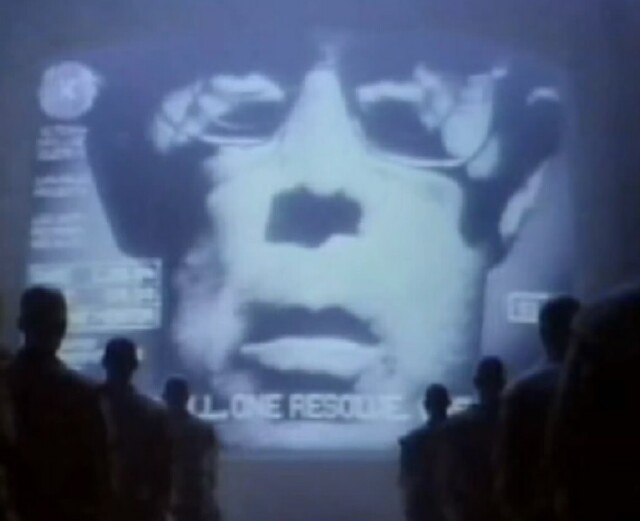HISTORY's Moment in Media: The "1984" Apple Ad That Changed Tech Advertising

It was, Steve Jobs might tell you, "insanely great." On January 22, 1984, the Los Angeles Raiders (as the team was then known) beat the Washington Redskins (as that team was then known) in Super Bowl XVIII. But for the nearly 78 million Americans watching on TV that night -- 39 years ago this month -- the most memorable part of the broadcast wasn't the game. It was an unprecedented, somewhat inscrutable 60-second commercial that didn't even display the product it was advertising.
It was the legendary "1984" ad for the Apple Macintosh, which would be introduced just two days later. And as much as the new computer revolutionized the tech industry and set Apple on its path toward dominance, the ad forever changed tech marketing and even helped cement the iconic role of the Super Bowl ad.
Apple had essentially invented the consumer personal computer with its Apple II, released in 1977. While all other computers until that point were cumbersome and designed for business customers, the Apple II took off. But in 1981, IBM introduced the IBM PC, and the business-machine behemoth became a formidable competitor in the home computer space. At the same time, Apple had experienced an expensive failure trying to break into the business market with the Lisa, the first computer with a graphical user interface, but one that was far too costly and insufficiently powerful. Jobs saw that more accessible personal computers were the future. Yet IBM and its PC were becoming dominant.
Still, Jobs had been leading a new project in development: the Macintosh. The first mass-market personal computer with a graphical user interface and a mouse, it was designed to be unintimidating and easy to use. This was the brief era when Jobs and John Sculley, the PepsiCo exec turned Apple CEO, were working well together. Sculley was an expert at selling consumers products. Jobs was a visionary and mythmaker. It was the first time a computer would be targeted not to tech enthusiasts or corporate clients but to consumers. And together with their ad agency, Chiat/Day, Jobs and Sculley were eager to sell their product as an upstart challenge to IBM's corporate domination.
Conveniently, the year was 1984 and George Orwells 1984 set exactly the tone this campaign needed. An allegorical novel about the evils of totalitarianism, 1984 imagines a world in which everyone must think the same thoughts, listen to the same rulers, live their lives as instructed by Big Brother. That formed the basis for Apple's landmark ad.
Ridley Scott, who had made Blade Runner two years earlier, directed the ad. It shows a dull, gray, industrial landscape, with men in shapeless clothes trudging through a tunnel toward a large black-and-white screen. They sit in front of it, as a Big Brother-like figure onscreen drones on about a worker's utopia of information purity. But there's one burst of color: a female athlete, dressed in red shorts and a white shirt, running toward the screen. She's carrying a sledgehammer and being chased by police. First, she winds up, swinging the hammer, then hurls it toward the screen, shattering it -- a devastating blow against a Big Blue monoculture. At 50 seconds in, the product is finally mentioned: "On January 24th, Apple Computer will introduce Macintosh," says a friendly voiceover. "And you'll see why 1984 won't be like 1984." (Two days later, at an auditorium in Cupertino, California, Jobs would at last show off an actual Mac. Reports say that when he removed a cloth cover from the new machine, there were audible gasps.)
The ad was never broadcast again. But it's been talked about for nearly four decades. It set the tone for Apple's unique advertising to come. And it showed the world, for the first time, that Super Bowl ads could be just as important as the game.
Click the social buttons to share this content with your friends and colleagues.
The opinions and points of view expressed in this content are exclusively the views of the author and/or subject(s) and do not necessarily represent the views of MediaVillage.com/MyersBizNet, Inc. management or associated writers.

